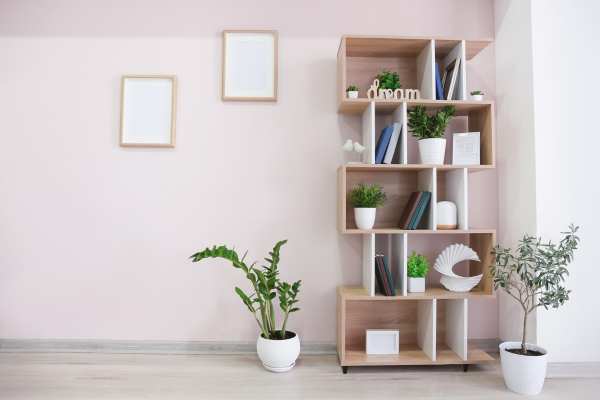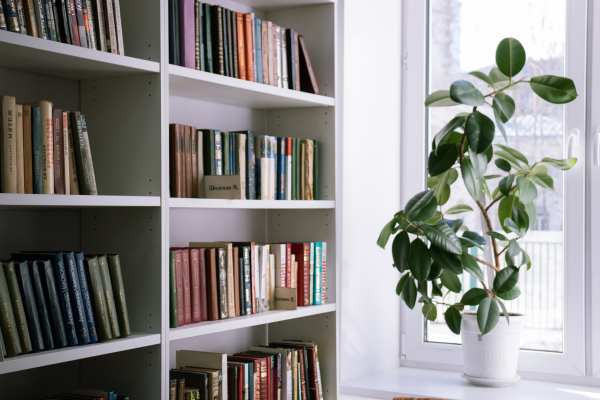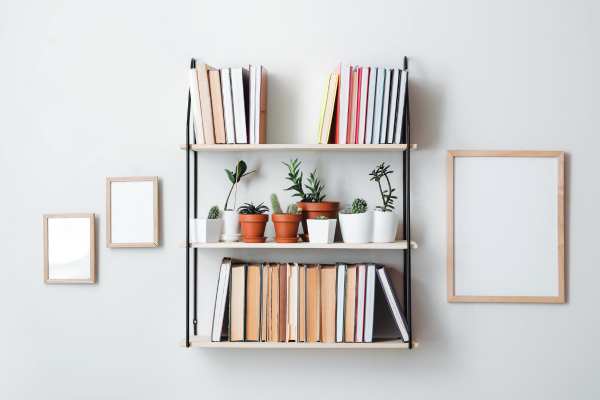Organizing your bookshelves can transform a cluttered space into a well-curated display that reflects your personal style. Whether you have a vast collection or a modest assortment, knowing how to put books on shelves effectively can make all the difference. From color-coordinating to arranging by genre or size, there are various methods to showcase your books beautifully and practically. This guide will explore creative and efficient ways to arrange your books, ensuring they not only look great but are also easy to access. Dive into the world of book organization and discover how to turn your shelves into a stunning focal point in your home.
Books On Shelves
Assess Your Book Collection

Begin by taking a thorough inventory of your book collection. This step is crucial for understanding the volume and variety of books you own. Separate your books into categories such as fiction, non-fiction, reference, and more. Consider which books you use frequently and which are more decorative. This will help you decide how much space you need and what kind of shelving system will best accommodate your collection. Additionally, you can identify any books that can be donated or stored elsewhere.
Choose the Right Bookshelf

Selecting the appropriate bookshelf is key to both functionality and aesthetics. Evaluate the available space in your room and choose a bookshelf that fits well without overwhelming the area. Consider the material, color, and style to ensure it complements your room’s decor. Bookshelves come in various forms, from traditional wooden shelves to modern metal or glass options. Think about adjustable shelves for flexibility or built-in shelves for a seamless look. The right bookshelf will not only hold your books but also enhance the overall ambiance of your space.
Clean and Prepare the Shelves

Before arranging your books, it’s essential to clean and prepare the shelves. Dust and wipe down each shelf to provide a clean surface for your books. If your shelves are adjustable, decide on the height for each section to accommodate different book sizes. This step ensures that your books are placed in a tidy and organized manner. Additionally, consider using shelf liners or bookends for added support and protection. Preparing your shelves properly will set the stage for a beautiful and well-organized bookshelf.
Plan Your Arrangement

Once you’ve assessed your collection, take some time to plan your book arrangement. Think about how you want your shelves to look and function. You can organize your books by genre, author, size, or even color for a visually appealing effect. Consider the balance between aesthetics and practicality; frequently used books should be easily accessible, while decorative pieces can be placed higher or lower. Sketch a rough plan or visualize the layout to ensure a smooth and efficient organization process.
Start with Larger and Heavier Books

Begin the actual shelving process by placing larger and heavier books first. These books should go on the bottom shelves to provide stability and prevent your bookshelf from toppling over. Heavier books also act as a foundation for lighter books placed above. If you have oversized books, consider placing them horizontally to create a unique visual effect. Starting with the bigger books allows you to build a stable and aesthetically pleasing base for the rest of your collection, making the subsequent steps easier.
Arrange Books by Chosen Method

With the larger books in place, proceed to arrange the rest of your collection according to your chosen method. If you’re organizing by genre, group similar books together and place them in designated sections. For a color-coordinated shelf, arrange books in a rainbow or ombre pattern for a striking visual impact. If organizing by size, create a gradient effect from tallest to shortest. Maintain consistency and order to achieve a clean, cohesive look. Add decorative elements like bookends, plants, or trinkets to personalize and enhance your bookshelf.
Incorporate Decorative Elements

Once your books are neatly arranged, it’s time to add some decorative elements to make your bookshelf truly stand out. Incorporate items such as bookends, small plants, photo frames, or unique trinkets that reflect your personal style. These decorations not only add visual interest but also break up the monotony of rows of books. Place these items strategically to enhance the overall aesthetic without overcrowding the shelves. Remember, the goal is to create a balanced and harmonious look that complements your book collection.
Maintain and Adjust

After setting up your bookshelf, regular maintenance is key to keeping it organized and visually appealing. Periodically dust the shelves and books to prevent buildup. As you acquire new books, reassess your arrangement and make necessary adjustments to accommodate them. You might need to shift some items or rearrange sections to maintain a cohesive look. Don’t hesitate to refresh your decorative elements from time to time to keep your bookshelf looking lively and updated. Consistent upkeep ensures your bookshelf remains a functional and beautiful part of your space.
Conclusion
Organizing your bookshelves is more than just a practical task; it’s an opportunity to create a personalized and aesthetically pleasing focal point in your home. By assessing your book collection, choosing the right bookshelf, and meticulously arranging your books, you can transform a cluttered space into an organized haven. Adding decorative elements and maintaining your setup ensures long-lasting beauty and functionality. Follow these steps, and you’ll not only have a well-organized bookshelf but also a reflection of your personal style and love for books.
